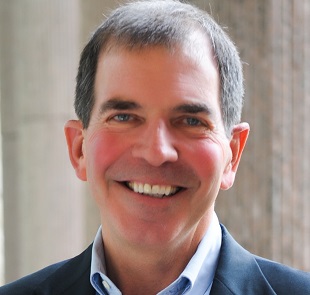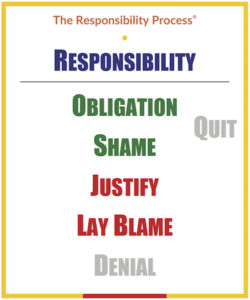
Christopher Avery is a keynote speaker at this year’s Path to Agility 2017 conference. He is an author, a speaker, and a CEO of Partnerwerks, Inc. Christopher is dedicated to helping people become great leaders. I recently had the pleasure of interviewing him and this is what he said:
You will be speaking at this year’s Path to Agility conference. What do you hope people will take away from your talk?
That they already have the power to overcome any problem or challenge, no matter how daunting it seems.
Who should come hear you speak?
Only people who want to take ownership of their life, to stop coping with problems and start growing.
What is The Responsibility Process?
The Responsibility Process® is a simple pattern in our mind that helps us process thoughts about taking and avoiding responsibility for our lives, actions, and situations (see attached jpg). As you learn about The Responsibility Process and how it works, you realize that we are each far more powerful and able than we usually give ourselves credit for.
How’d you come up with the idea of The Responsibility Process?
It is not my original idea. The Responsibility Process® was derived from phenomenological research over many years. I was introduced to the research by one of the team members many years ago. I already had advanced degrees in social science so I had studied lots of models of normal psychology. This was the most powerful model I had seen. So, knowing that I was a speaker, he challenged me to never again speak to a group without teaching them about responsibility. I’ve been true to that pledge. That’s why my name is associated with The Responsibility Process.
You’ve written some books. What are they and what can you tell us about them? My latest title is The Responsibility Process: Unlocking Your Natural Ability to Live and Lead with Power. It offers three potent tools you can use to bring more freedom, power, and choice to your life. Some lucky attendees will get a copy of this book at the conference and I’ll be pleased to sign it if asked. My first book, Teamwork Is An Individual Skill: Getting your Work Done When Sharing Responsibility, is now a classic. It introduced industry-leading principles and practices for shared leadership and shared responsibility. FORTUNE magazine called it the only book on teamwork that you need to read.
How have you seen people take what you’ve taught and apply it to their lives?
I’m blessed to be associated with such great material. I’ve had the good fortune to witness hundreds of people take charge of their lives and produce such joy and freedom for themselves and others. Just today an agile coach who trained with me last month in Toronto told me how liberating it was when he noticed that he was in Quit (one of the mental positions of false responsibility) around a significant and longstanding problem in his life. He said the number of options that opened up for him was exciting. I often hear from very talented and outwardly successful professionals telling me that before learning The Responsibility Process they did not know that there was life beyond Obligation. And now they find tremendous joy in their work, and they shape their work to produce greater value for others and bring more joy to themselves. There are COHAA board members who have such stories. And thousands of teams around the globe practice ownership and freedom at high levels because they adopt The Responsibility Process as a shared language for sense-making.
How’d you become interested in leadership?
I learned early in my career that leadership and management were not the same. You can be a leader without managing. And you can manage without leading. So I became interested in lower case “l” leadership. Leadership as a behavior. And what I learned was that leadership is a natural side-effect of being in motion toward a goal or purpose that is larger than you. When you embody a larger vision and purpose, one that you need help to achieve, then a part of your character turns into a leader — a natural leader. Not a title or an assignment, but a role dynamic. Everyone has this capability. It is innate. So, if I can help you identify what you care deeply about, and pursue it, then there is a good chance you will demonstrate leadership.
What is something that can hinder people from being good leaders? How can they overcome it?
You know, we all have dark sides or shadow sides of us, as well as light sides–bravado, arrogance, envy, scarcity-thinking, invalidating others, etc. I recommend that we learn to know and love those dark sides as well as the light sides. Use The Responsibility Process to face and overcome the dark sides. When we do this we can focus more and more on creating value and abundant opportunity for ourselves and others to step into.
Where can we go to find out more about what you do?
The most important website is http://www.the.leadershipgift.com/. Beyond that, I recommend searching on my name (Christopher Avery) and “responsibility”.
What else can you tell us?
Your life can be very different in three months, when you actively practice The Responsibility Process. Also, you may be able to attend a workshop with me in Columbus in the near future. Stay tuned.






